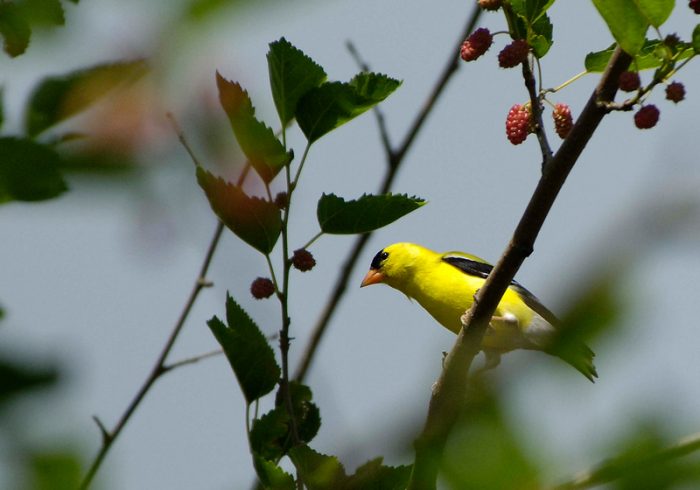West Virginia is a great state to live and visit, if you love watching birds and tracking them as they come and go each spring. With its mountains, valleys and everything in between, West Virginia provides many different habitats for birds and plenty of places for you to observe our avian friends. So, grab your binoculars and field guide. Here are a few things about West Virginia’s birds to help you enjoy bird watching.
How many bird species are in West Virginia?
West Virginia has more than 170 breeding species of birds. Many birds are only part-time residents of the state. Some birds only spend winters in West Virginia while some migratory birds can be observed only during the spring and summer.
How does the WVDNR monitor and protect birds?
West Virginia Division of Natural Resources wildlife biologists monitor several bird species of greatest conservation need. This includes:
- Monitoring known bald eagle nests
- Seeking reports of new active bald eagle nest locations
- Conducting the annual Breeding Bird Surveys
- Tracking populations of secretive marshbirds
- Seeking requests of barn owl locations in wide open areas across the state
- Seeking locations of loggerhead shrikes on pastures in eastern West Virginia
What kind of bird habitats does West Virginia have?
West Virginia’s unique topography and location in North America provide incredible and diverse habitats for hundreds of bird species. There’s more than 10 million acres of forest, pastureland and hundreds of lakes, rivers, streams, creeks and wetlands where birds thrive. West Virginia’s bird diversity can also be attributed to the state falling within the southernmost breeding range for some birds and the northernmost breeding range for others.
Bird watching basics
Birdwatching is easy, accessible and doesn’t require a lot of special equipment or expertise. If you look and listen carefully, you can see and hear birds almost anywhere in West Virginia, from your backyard to deep in the woods. Below are some basics to keep in mind as you look for birds.
What do I need to see birds?
- Binoculars
- Spotting scope
- Field guides
- Journal
- Camera
Where can I see birds?
- City, county and regional parks and nature areas
- State parks and forests
- National parks, forests, rivers, recreational areas and wildlife refuges
- Scenic trails
- Wildlife management areas
- Nature preserves
- Private land (always get permission from landowners)
How can I make my property more inviting for birds?
If you provide a safe and inviting environment for birds, you’ll see them take up residence in no time. To get started, plant native trees, plants and shrubs to provide food, cover and places for birds to nest. You’ll also need to keep cats inside and cover reflective surfaces during breeding season and add bird-avoidance decals to windows you notice birds flying into. Next, provide food and water by setting up bird feeders and baths. Here are a few things to remember:
- Clean feeders and baths regularly.
- Fill feeders with black-oiled sunflower seed.
- Fill hummingbird feeders with a simple, 1 part sugar to 3 parts water solution.
- Do not add food coloring or honey to hummingbird feeders.
- Position bird feeders near cover so birds can easily escape predators.
- Stop feeding birds if feeders attract unwanted critters such as bears, skunks or mice.
Setting up bird nest boxes is also a great way to attract birds to your yard. Not all birds will use them to make a nest though, so do some research and come up with a plan before you get started. Just remember to:
- Clean out bird nest boxes biannually, before and after the nesting season.
- Provide large boxes for bigger birds and small boxes for smaller birds.
- Make sure the nest box opening is the correct size to keep out unwanted starlings
- Make your own bird nest boxes. Many store bought nest boxes are mostly decorative.

